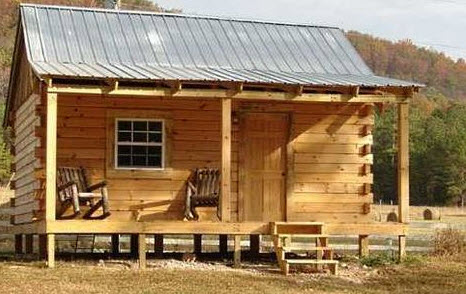
Food is essential to our survival and seeing as how we never know what might happen in the near or distant future, it’s only normal that we want to prepare for some eventualities. What better way to ensure you and your family have at least the basic food supplies than starting your own survival garden? There are many reasons why people might have the need for one, including crop failure, supply shortage or the inability to pay for supplies due to unemployment.
In addition to having produce that will keep you fed, there are other benefits to gardening as well, such as reducing stress, getting some exercise and improving your overall health. So, if you are considering starting your own survival garden, here is how to design and grow it.
Find the Right Location
The most important part when starting a survival garden is finding the right location for it. Sure, it’s easy to just plant your vegetables wherever you have enough space in your yard; however, in order for your garden to thrive and for you to have the necessary yield, it’s essential that you think this through very well.
Seeing as how vegetables need at least six hours of sunlight a day to reach their potential, you should look for a spot in your yard where they can enjoy enough sun during the first part of the day and still get some shade later in the afternoon.
Next, you need to prepare your garden bed, so dig up a few inches of the soil to get rid of any undesirable plants and to fortify this area by adding some soil amendments if necessary. What you should also do is look into ways of making your garden water-smart as that will help you deal with the inevitable droughts.
Pick the Best Plants
Apart from ensuring the soil is full of nutrients, it’s also vital to choose the right plants to grow. There are several factors you need to think about when purchasing seeds.
First, it’s best to look for perennial plants seeing as how they don’t require replanting and will grow back every year. That means that you will have a garden full of life every spring without having to do anything, thanks to their extensive root systems that allow them to grow produce even when the conditions are harsh. There are perennial fruits (apples, apricots, plums, pears, figs, etc.), nuts (chestnut, hazelnut, pecan, almond and so on) and vegetables, such as asparagus, arugula, rhubarb and so many more. Of course, there are also herbs like horseradish, oregano, thyme, sage and mint to consider.
Second, seeing as how some plants produce way too much food for you to consume at once, you should also find varieties that store well – for instance, squash, carrots, kale, beets, cabbage and onions. Then, from strawberries through elderberries and cranberries all the way to blackberries and raspberries – berries are easily frozen which means that you can use them whenever you need to.
Also, in addition to storing food for the colder days, you can also look into plants adaptable to colder conditions. While it might seem like nothing grows during this time of year, there are both annual and perennial plants that produce crops even in winter, so consider planting sweet corn, spring onions and lemons as well. What is more, broccoli, lettuce, spinach and scallions can all be grown in low tunnels which protect them from the lower temperatures.
Finally, the number of calories these plants will provide you with is important as well. This is why you also need potatoes, dried beans, peas and avocados among other things. Having a calorie-dense garden is important not only for vegetarians and vegans but also in case there is no meat you can find and consume.
Develop a Productive Strategy
It’s crucial to keep in mind that taking care of a survival garden is not the same as traditional gardening. Seeing as how you need to maximize your output, the layout is vital. So, learn more about companion planting to see which species can work together to achieve better health and production. Certain plants can affect the growth of other ones, so make sure to keep those apart.
Then, different plants need to be planted and harvested at different times of the year so make sure to familiarize yourself with the varieties you’re growing and develop a schedule to stay on top of everything. Last but not least, remember to keep them safe from various pests.
You never know why you might need a survival garden, so it’s best to start preparing on time. If you’re not very experienced in gardening, start learning as much as you can as soon as possible to be ready for any challenges life throws at you. Look into the plants you will benefit most from, find the right place for your garden and make sure to take good care of these plants as they might be your life-savers.








